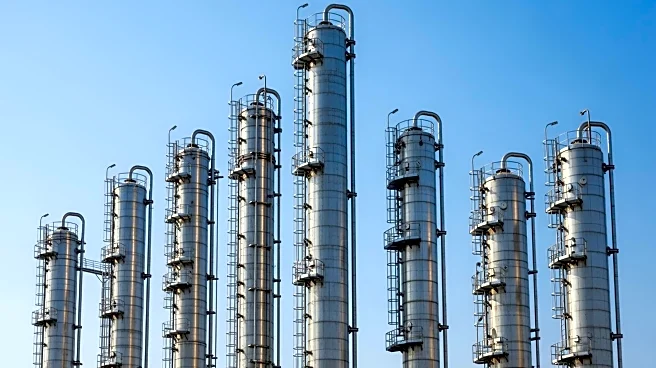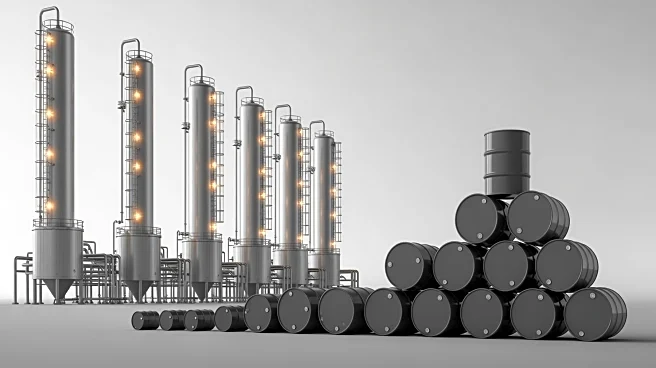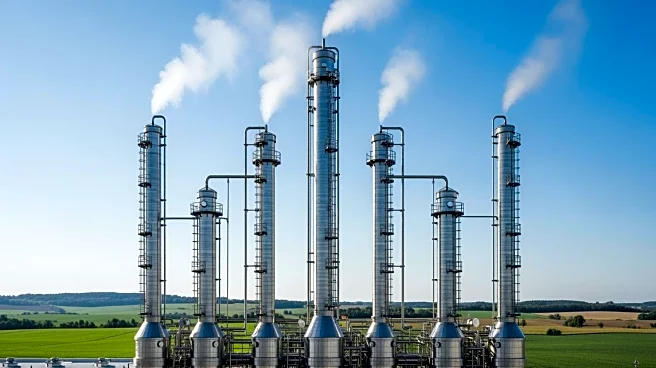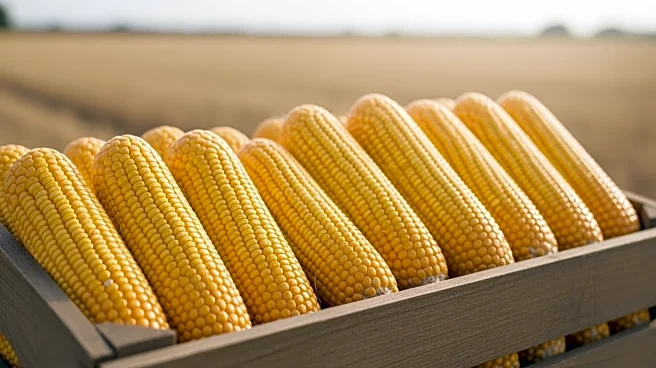What's Happening?
Ethanol production in the United States has reached its highest level in five weeks, according to the Energy Information Administration. The production averaged 1.074 million barrels per day in the week ending October 10, marking a modest increase from
the previous week. Despite the rise in production, ethanol inventories have decreased to 22.628 million barrels, the lowest level in a month. The Midwest remains the largest producing region, although production there fell slightly. Other regions, such as the Gulf Coast and East Coast, saw increases in output. This development comes amid ongoing concerns about dry weather affecting crop yields in major agricultural states like Iowa and Illinois.
Why It's Important?
The increase in ethanol production is significant for the U.S. biofuel industry, which plays a crucial role in the agricultural sector and energy markets. Ethanol is a key component in gasoline, and fluctuations in its production and inventory levels can impact fuel prices and agricultural economics. The decline in inventories suggests a strong demand for ethanol, which could influence market dynamics and pricing strategies. Additionally, the ongoing drought conditions in major crop-producing states could affect future ethanol production, as corn is a primary feedstock for ethanol. Stakeholders in the energy and agricultural sectors will be closely monitoring these trends.
What's Next?
As ethanol production continues to rise, stakeholders will be watching for potential impacts on fuel prices and agricultural markets. The ongoing drought conditions could further affect crop yields, influencing future ethanol production levels. The Energy Information Administration will likely continue to report on these trends, providing insights into the biofuel market. Additionally, policymakers and industry leaders may consider strategies to address inventory fluctuations and ensure stable production levels.
Beyond the Headlines
The ethanol production increase highlights broader issues in the energy and agricultural sectors, including the impact of climate conditions on crop yields and biofuel production. The decline in inventories may prompt discussions on supply chain management and storage capabilities within the industry. Furthermore, the role of ethanol in reducing carbon emissions and promoting renewable energy sources remains a critical aspect of environmental policy debates.














